Business support to boost 2024 goals
Prime Minister Pham Minh Chinh reported to the National Assembly (NA) last week that based on the out-of-expectation economic growth rate in the first nine months of this year, the economy is only set to grow by around 5 per cent this year, with an average inflation rate of about 3.5 to 4 per cent.
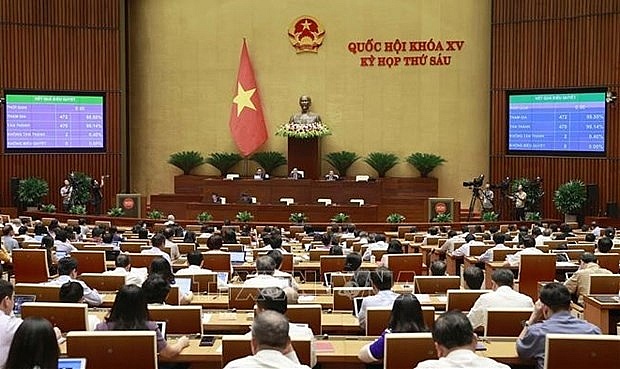 |
| The 15th National Assembly holds the vote of confidence on 44 officials on October 25. (Photo: VNA) |
Vu Hong Thanh, Chairman of the National Assembly Economic Committee, which has appraised the government’s socioeconomic report submitted to the NA, also told the legislature that this year was expected to see the economy increase by about 5 per cent.
“Though lower than the set target of 6.5 per cent, it will still remain relatively higher than in many nations in the region and beyond. The inflation rate is predicted to ascend 3.5 per cent, far lower than the set target of about 4.5 per cent,” Thanh said.
Many international organisations have set a positive economic growth target for Vietnam including the International Monetary Fund at 5.8 per cent, the World Bank at 5.5 per cent, the Asian Development Bank at 5.8 per cent, Moody’s at 5.6 per cent, and Fitch Solutions at 5 per cent.
Global analysts FocusEconomics last week also projected that the Vietnamese economy “is set to miss the government’s 6.5 per cent growth target for the year” due to subdued private spending and exports.
The Asian Development Bank (ADB) has also said that Vietnam’s economic growth is expected to slow to 5.8 per cent in 2023 and 6 per cent in 2024, compared to its April forecast of 6.5 and 6.8 respectively, mainly due to weak external demand.
“The nine-month economic growth remains relatively low due to slow-paced economic growth in China and many key markets of Vietnam, affecting Vietnam’s industrial production and exports,” said Shantanu Chakraborty, country director for Vietnam at the ADB. “This would mean it is very hard for Vietnam to reach its desired economic growth goal of 6-6.5 per cent this year.”
Weaker recovery
The government reported to the NA last week that after growing 3.32 per cent in Q1 of 2023, the Vietnamese economy bounced back to 4.14 per cent on-year in Q2, and 5.33 per cent on-year in Q3.
Vietnam’s economy grew 4.24 per cent on-year in the first nine months of this year. In which, the agro-forestry-fishery sector expanded 4.43 per cent, while the on-year rates of the industry and construction sector and the service sector were 2.41 and 6.32 per cent, respectively.
“This year, many key driving forces for economic growth have slowed down, with an increase in difficulties. It is expected that in 2023, the export and import turnover will decrease 3.5 and 4.2 per cent, respectively, while the bad debt ratio in the economy tends to rise [by late July, the bad debt ratio was 3.56 per cent, higher than the target of under 3 per cent],” said Minister of Planning and Investment Nguyen Chi Dung.
The governmental report also underlined a series of hurdles for the economy since early this year and beyond. “Macroeconomic stability remains not solid due to massive external pressure. Industrial production is recovering very slowly, especially the processing and manufacturing sector,” the report read. “Business and production activities are still bogged down in difficulties, with a rise in the number of enterprises with bankruptcy and dissolution, and businesses’ lack of orders.”
In the first nine months of the year, the added value of the industrial sector increased only 1.65 per cent on-year, in which that of the manufacturing and processing sector expanded merely 1.98 per cent.
Also in this period, 75,800 businesses halted operations – up 21.2 per cent as compared to the corresponding period last year; 46,100 enterprises stopped operations and waited for dissolution procedures – up 26.9 per cent; and 13,200 enterprises completed such procedures. On average, about 15,000 businesses were kicked off from the market every month.
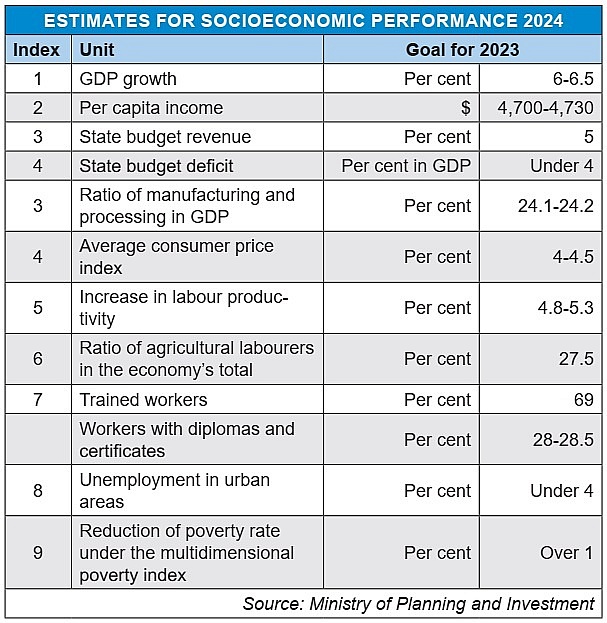 |
Likely prospects for 2024
The government has set a target of achieving GDP growth of 6-6.5 per cent next year, based on the expectation that the domestic business and production activities will strongly bounce back from now until the end of the year, and next year when global demands, production, and consumption will also strongly recover.
“To achieve the new growth target, we will continue to prioritise and strongly promote growth pertaining to maintaining macroeconomic stability, controlling inflation and ensuring major balances of the economy,” the government told the NA.
PM Chinh said, “More big solutions will be used to strongly spur on growth propellants including investment, consumption, and exports, while effectively taking advantage of opportunities from the domestic and international markets. All ministries, sectors, and localities have to make greater efforts to weather difficulties, spur on recovery and development of business and production activities.”
According to the Ministry of Finance, in 2023, a package of about $8.44 billion is earmarked for supporting businesses in the form of tax exemption and reductions. So far, more $5.48 billion has been realised. Going forward, another $2.74 billion worth of budget revenue last year will be added to the package, said Deputy Minister of Finance Vo Thanh Hung.
FocusEconomics sees GDP expanding 5.9 per cent in 2024, down 0.3 percentage points from a month ago, and up 6.6 per cent in 2025.
United Overseas Bank’s Suan Teck Kin said, “The latest data showed some encouraging signs that activities may have turned around as exports expanded in September after six consecutive months of declines while manufacturing output recorded its fourth consecutive month of on-year increases.”
“Despite the uncertain outlook, foreign enterprises continued to commit to the country in the current wave of de-globalisation, de-risking, and supply chains shifts. Despite firmer growth in Q3 of 2023, the drag from the first six months of the year remains significant. As such, we are adjusting lower Vietnam’s full-year growth forecast to 5 per cent.”
The European Chamber of Commerce Vietnam’s quarterly Business Confidence Index released two weeks ago regained its upward trajectory in Q3, offering a glimmer of hope for the business environment.
The index, which surveys over 1,300 European companies, nudged up to 45.1 in the third quarter, from 43.5 the previous quarter. While still below the 50-point threshold for four straight quarters, this small rise indicates emerging positive economic momentum.
| Nguyen Chi Dung, Minister of Planning and Investment
We will continue to be steadfast and consistent in the goal of ensuring macroeconomic stability, controlling inflation, and ensuring major balances of the economy. The economy’s internal capacity, autonomy, and status in the global value chain have to be enhanced. We will also synchronously and flexibly manage macro policies, while ensuring close coordination among agencies in macroeconomic management and direction. Flexible, timely and effective policy responses have to be made to resolve challenges, take advantage of opportunities, and strongly continue to promote growth drivers such as investment, consumption, and exports. It is also necessary to accelerate the progress of building and improving institutions, ensuring a synchronous legal system. We will have to ensure quick and effective implementation of laws, resolutions, and policies, while accelerating the process of institutionalising and concretising the Party’s guidelines and policies, and the state’s laws. It is also necessary to drastically reform administration, cut administrative procedures and business regulations, while improving the business and investment environment, and developing safe, healthy, efficient, sustainable and integrated markets. In addition, we will have to create strong changes in restructuring the economy associated with innovating growth models; promote digital economy and green economy; and research and develop new industries, high technology, and new materials. What is more, it is necessary to further accelerate the disbursement of public investment capital, especially key transportation projects, while completing the strategic infrastructure system, especially traffic infrastructure. We will also need to speed the north-south high-speed railway project, as well as develop energy infrastructure and digital infrastructure for improving internal capacity. We will have to promote human resource development, especially in the sector of high technology such as chips and semiconductors manufacturing. Furthermore, we will focus on training 50,000-100,000 high-quality engineers for the electronic chip manufacturing industry by 2030. We will also research and build mechanisms to promote the leading role and driving force of science, technology, and innovation, while creating breakthroughs in productivity, quality, efficiency, and competitiveness. |
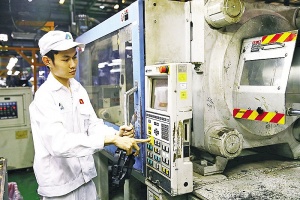 | Vietnam's economic growth projected at 4.7 per cent in 2023 The Vietnamese economy is forecast to grow by 4.7 per cent in 2023, before rebounding to 6 per cent in 2024, according to the ASEAN+3 Macroeconomic Research Office (AMRO). |
 | Public investment crucial for Vietnam’s economic growth: ADB director Vietnam’s maintaining the momentum of public investment will be crucial because it will rejuvenate economic activities, generate employment, and enhance domestic consumption, said ADB Country Director for Vietnam Shantanu Chakraborty. |
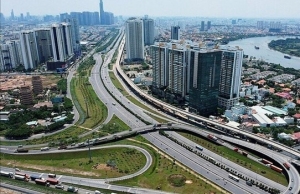 | Public investment a locomotive for economic growth: Experts Public investment is expected to be an engine for Vietnam’s economic growth in the context that global headwinds may challenge the country’s growth target of 6.5 per cent, according to experts. |
What the stars mean:
★ Poor ★ ★ Promising ★★★ Good ★★★★ Very good ★★★★★ Exceptional
Related Contents
Latest News
More News
- Double-digit GDP growth within reach with shift to higher-value expansion (January 06, 2026 | 08:33)
- Takeda Vietnam awarded for ongoing support of Vietnam’s sustainability efforts (December 31, 2025 | 21:00)
- Vietnam's retail market tops $269 billion in 2025 amid e-commerce boom (December 31, 2025 | 19:00)
- Stronger legal framework urged as trade fraud surges online (December 31, 2025 | 18:58)
- FPT exports first chip shipment to Japan (December 31, 2025 | 10:47)
- AkzoNobel rolls out sustainability campaign “It All Adds Up” for the wood sector (December 31, 2025 | 09:23)
- Textile apparel firms deliver robust earnings despite global tariff pressures (December 30, 2025 | 10:09)
- Businesses ramp up production as year-end orders surge (December 30, 2025 | 10:05)
- Vietjet chairwoman awarded Labour Hero title (December 29, 2025 | 13:06)
- How to unlock ESG value through green innovation (December 29, 2025 | 10:03)

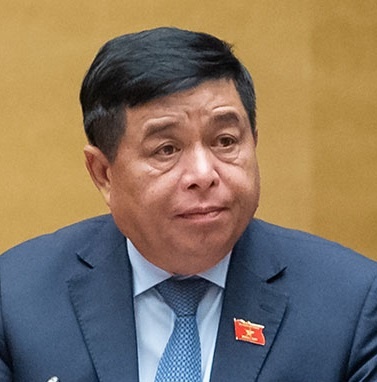
 Tag:
Tag:



















 Mobile Version
Mobile Version